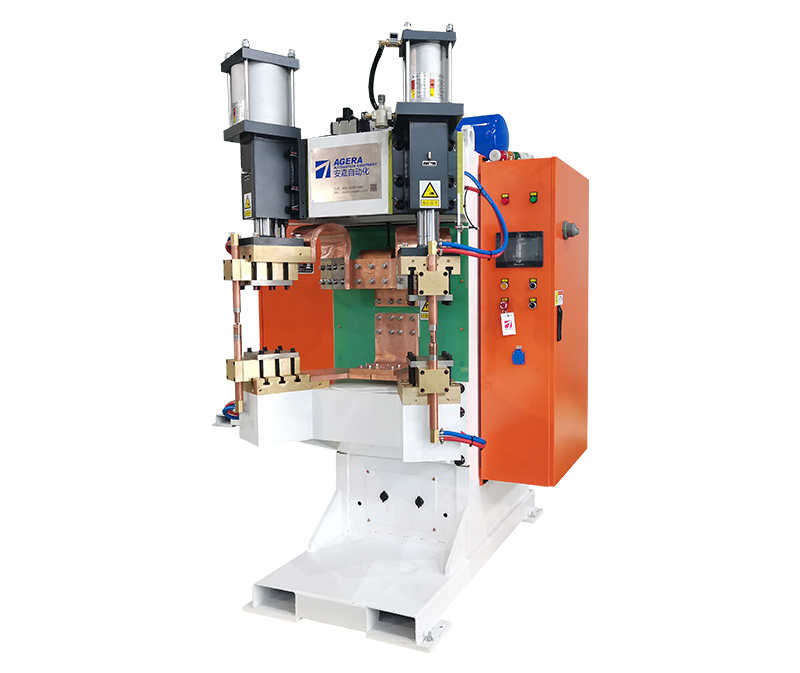Integration of Recirculation System and Current Adjustment in Nut Spot Welding Machines
The integration of a recirculation system and current adjustment in nut spot welding machines is a significant development in the welding industry. This combination enhances welding efficiency, control, and overall welding performance. This article explores the benefits and functionalities of incorporating a recirculation system and current adjustment in nut spot welding machines, highlighting their importance in achieving precise and consistent spot welds.
Integration of Recirculation System and Current Adjustment in Nut Spot Welding Machines:
- Recirculation System: The recirculation system in nut spot welding machines is designed to manage the cooling water used during the welding process. This system continuously circulates water through the welding electrodes and welding head to maintain optimal temperatures, preventing overheating and ensuring consistent welding quality.
- Cooling Efficiency: The recirculation system’s integration significantly improves cooling efficiency during nut spot welding. Proper cooling prevents electrode wear and ensures consistent electrode temperature, contributing to extended electrode life and reducing downtime for electrode replacements.
- Enhanced Electrode Performance: With the recirculation system, electrodes maintain a stable temperature, resulting in consistent electrical conductivity and improved welding performance. This enhances electrode life and reduces the risk of weld defects caused by inconsistent heat transfer.
- Precise Current Adjustment: The current adjustment feature allows operators to fine-tune the welding current based on specific joint configurations and material thickness. This precision enables welders to achieve optimal heat input, penetration, and fusion, resulting in high-quality, reliable spot welds.
- Weld Quality Control: The integration of current adjustment provides better control over the welding process, leading to consistent weld quality. Operators can tailor the welding parameters to suit different workpiece materials, ensuring uniform spot welds with minimal variations.
- Energy Efficiency: By allowing precise current adjustment, the nut spot welding machine operates with greater energy efficiency. Welders can optimize the energy consumption according to the welding requirements, contributing to cost savings and reduced environmental impact.
- Improved Weld Reproducibility: The combination of the recirculation system and current adjustment ensures reproducibility in spot welding. Welders can replicate welding parameters for similar workpieces, ensuring consistent weld quality throughout production.
In conclusion, the integration of a recirculation system and current adjustment in nut spot welding machines offers numerous advantages, including enhanced cooling efficiency, improved electrode performance, precise current adjustment, weld quality control, energy efficiency, and improved weld reproducibility. These features collectively contribute to achieving precise, consistent, and reliable spot welds, enhancing overall welding performance and productivity. Understanding the significance of this integration empowers welders and professionals to optimize spot welding processes and meet industry standards. Emphasizing the importance of these advancements supports the continuous improvement and innovation in welding technology, promoting excellence in metal joining across diverse industrial applications.
